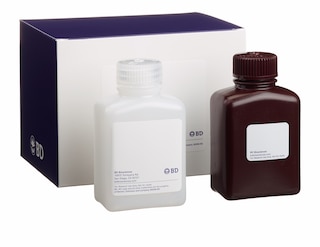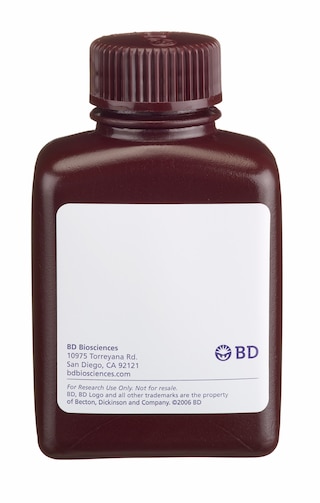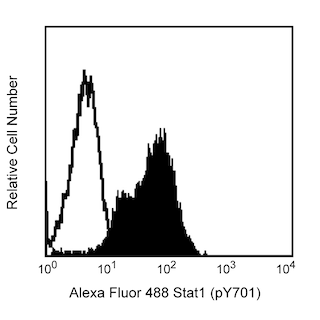-
Reagents
- Flow Cytometry Reagents
-
Western Blotting and Molecular Reagents
- Immunoassay Reagents
-
Single-Cell Multiomics Reagents
- BD® OMICS-Guard Sample Preservation Buffer
- BD® AbSeq Assay
- BD® OMICS-One Immune Profiler Protein Panel
- BD® Single-Cell Multiplexing Kit
- BD Rhapsody™ ATAC-Seq Assays
- BD Rhapsody™ Whole Transcriptome Analysis (WTA) Amplification Kit
- BD Rhapsody™ TCR/BCR Next Multiomic Assays
- BD Rhapsody™ Targeted mRNA Kits
- BD Rhapsody™ Accessory Kits
-
Functional Assays
-
Microscopy and Imaging Reagents
-
Cell Preparation and Separation Reagents
-
- BD® OMICS-Guard Sample Preservation Buffer
- BD® AbSeq Assay
- BD® OMICS-One Immune Profiler Protein Panel
- BD® Single-Cell Multiplexing Kit
- BD Rhapsody™ ATAC-Seq Assays
- BD Rhapsody™ Whole Transcriptome Analysis (WTA) Amplification Kit
- BD Rhapsody™ TCR/BCR Next Multiomic Assays
- BD Rhapsody™ Targeted mRNA Kits
- BD Rhapsody™ Accessory Kits
- United States (English)
-
Change country/language
Old Browser
This page has been recently translated and is available in French now.
Looks like you're visiting us from {countryName}.
Would you like to stay on the current country site or be switched to your country?




.png)

Flow cytometric analysis of β-Catenin expression by mouse bone marrow stromal cells. M2-10B4 cells (ATCC CRL-1972™) were fixed and permeabilized using the BD Cytofix/Cytoperm™ Fixation/Permeabilization Solution Kit (Cat. No. 554714). The cells were stained with either Alexa Fluor® 488 Mouse IgG1 κ Isotype Control (557721; open histogram) or Alexa Fluor® 488 Mouse anti-β-Catenin (Cat. No. 562505; filled histogram). Flow cytometry was performed using a BD™ LSR II Flow Cytometer System.

Immunofluorescent staining and imaging of human breast adenocarcinoma cells. Human MCF-7 cells (ATCC HTB-22™) were processed and stained according to the Recommended Assay Procedure for Bioimaging cultured cells. The cells were stained with Alexa Fluor® 488 Mouse anti-β-Catenin monoclonal antibody (Cat. No. 562505, pseudo-colored green) and counter-stained with Hoechst 33342 Solution (Cat. No. 561908; pseudo-colored blue). The images were captured using a BD Pathway™ 435 Bioimager System with a 20x objective and merged using BD Attovision™ software.
.png)

BD Pharmingen™ Alexa Fluor® 488 Mouse anti-β-Catenin

BD Pharmingen™ Alexa Fluor® 488 Mouse anti-β-Catenin
.png)
Regulatory Status Legend
Any use of products other than the permitted use without the express written authorization of Becton, Dickinson and Company is strictly prohibited.
Preparation And Storage
Recommended Assay Procedures
Recommended Assay Procedure for Bioimaging: http://www.bdbiosciences.com/support/resources/protocols/ceritifed_reagents.jsp
1. Seed ~10,000 cells in appropriate culture medium in a BD Falcon™ 96-well Imaging Plate (Cat. No. 353219) and culture overnight.
2. Remove the culture medium from the wells and fix the cells by adding 100 µl of fresh 3.7% Formaldehyde in PBS or BD Cytofix™ Fixation Buffer (Cat. No. 554655) to each well and incubate for 10 minutes at room temperature (RT).
3. Remove the fixative from the wells, and permeabilize the cells using either cold methanol or Triton™ X-100.
a. Add 100 μl of -20°C 90% methanol or -20°C BD Phosflow™ Perm Buffer III (Cat. No. 558050) to each well and incubate (5 min, RT). OR
b. Add 100 µl of 0.1% Triton™ X-100 (Sigma-Aldrich Cat. No. X-100) to each well and incubate (5 min, RT).
4. Remove the permeabilizer from the wells, and wash wells twice with 100 μl of 1× PBS.
5. Remove the PBS and block the cells by adding 100 μl of blocking buffer, eg, BD Pharmingen™ Stain Buffer (FBS) (Cat. No. 554656) or 3% FBS in 1× PBS to each well and incubate (30 min, RT).
6. Meanwhile, put 5 ul (1 test size) Bioimaging Certified fluorescent antibodies into 45 ul of Stain Buffer; protect from light.
7. Remove the blocking buffer and add 50 μl of prepared fluorescent antibody per well and incubate (60 min, RT), protect from light.
8. Remove the fluorescent antibody and wash the wells three times with 100 μl of 1× PBS.
9. Remove the PBS and counterstain the nuclei by adding 100 µl of a 2 µg/ml solution of Hoechst 33342 (Cat. No. 561908) in 1× PBS to each well at least 15 minutes before imaging.
10. View and analyze the cells using an appropriate imaging instrument. Recommended filters for the BD Pathway™ Instruments are:
Instrument Excitation Emission Dichroic
BD Pathway™ 855 488/10 515 LP Fura/FITC
BD Pathway™ 435 482/35 536/40 FF506
Product Notices
- This reagent has been pre-diluted for use at the recommended Volume per Test when following the Recommended Assay Procedure. A Test is typically ~10,000 cells cultured in a well of a 96-well imaging plate.
- An isotype control should be used at the same concentration as the antibody of interest.
- Alexa Fluor® 488 fluorochrome emission is collected at the same instrument settings as for fluorescein isothiocyanate (FITC).
- Please refer to www.bdbiosciences.com/us/s/resources for technical protocols.
- The Alexa Fluor®, Pacific Blue™, and Cascade Blue® dye antibody conjugates in this product are sold under license from Molecular Probes, Inc. for research use only, excluding use in combination with microarrays, or as analyte specific reagents. The Alexa Fluor® dyes (except for Alexa Fluor® 430), Pacific Blue™ dye, and Cascade Blue® dye are covered by pending and issued patents.
- Caution: Sodium azide yields highly toxic hydrazoic acid under acidic conditions. Dilute azide compounds in running water before discarding to avoid accumulation of potentially explosive deposits in plumbing.
- Triton is a trademark of the Dow Chemical Company.
- Alexa Fluor® is a registered trademark of Molecular Probes, Inc., Eugene, OR.
- Source of all serum proteins is from USDA inspected abattoirs located in the United States.
Companion Products






The 14/Beta-Catenin monoclonal antibody specifically binds to Beta-Catenin (β-Catenin). β-Catenin is a 92 kDa protein that binds to the cytoplasmic tail of E-Cadherin. The cadherins, transmembrane adhesion molecules, are found with catenins at adherens junctions (zonula adherens). Deletions in the cytoplasmic domain of E-Cadherin which eliminate catenin binding also result in a loss of cell adhesion, indicating that this binding is essential for E-Cadherin function. Although the α- and β-Catenins have been cloned, very little is known about their biochemical roles. However a link between β-Catenin and colon cancer has been described. β-Catenin was found to co-immunoprecipitate with the APC tumor suppressor protein in human colorectal tumor cell lines, as well as in human kidney 293 cells. E-Cadherin, however, was not detectable in these complexes. Thus the APC-Catenin complex may be affecting the transmission of contact inhibition signals and/or the regulation of cell adhesion.
Development References (5)
-
Eger A, Stockinger A, Schaffhauser B, Beug H, Foisner R. Epithelial mesenchymal transition by c-Fos estrogen receptor activation involves nuclear translocation of beta-catenin and upregulation of beta-catenin/lymphoid enhancer binding factor-1 transcriptional activity. J Cell Biol. 2000; 148(1):173-187. (Clone-specific: Electron microscopy, Immunofluorescence, Immunoprecipitation, Western blot). View Reference
-
Lee MS, D'Amour KA, Papkoff J. A yeast model system for functional analysis of beta-catenin signaling. J Cell Biol. 2002; 158(6):1067-1078. (Clone-specific: Immunofluorescence, Immunoprecipitation, Western blot). View Reference
-
Ozawa M, Ringwald M, Kemler R. Uvomorulin-catenin complex formation is regulated by a specific domain in the cytoplasmic region of the cell adhesion molecule. Proc Natl Acad Sci U S A. 1990; 87(11):4246-4250. (Biology). View Reference
-
Persad S, Troussard AA, McPhee TR, Mulholland DJ, Dedhar S. Tumor suppressor PTEN inhibits nuclear accumulation of beta-catenin and T cell/lymphoid enhancer factor 1-mediated transcriptional activation. J Cell Biol. 2001; 153(6):1161-1173. (Clone-specific: Gel shift, Immunofluorescence, Immunoprecipitation, Western blot). View Reference
-
Tateishi K, Omata M, Tanaka K, Chiba T. The NEDD8 system is essential for cell cycle progression and morphogenetic pathway in mice. J Cell Biol. 2001; 155(4):571-579. (Clone-specific: Immunofluorescence, Immunohistochemistry). View Reference
Please refer to Support Documents for Quality Certificates
Global - Refer to manufacturer's instructions for use and related User Manuals and Technical data sheets before using this products as described
Comparisons, where applicable, are made against older BD Technology, manual methods or are general performance claims. Comparisons are not made against non-BD technologies, unless otherwise noted.
For Research Use Only. Not for use in diagnostic or therapeutic procedures.